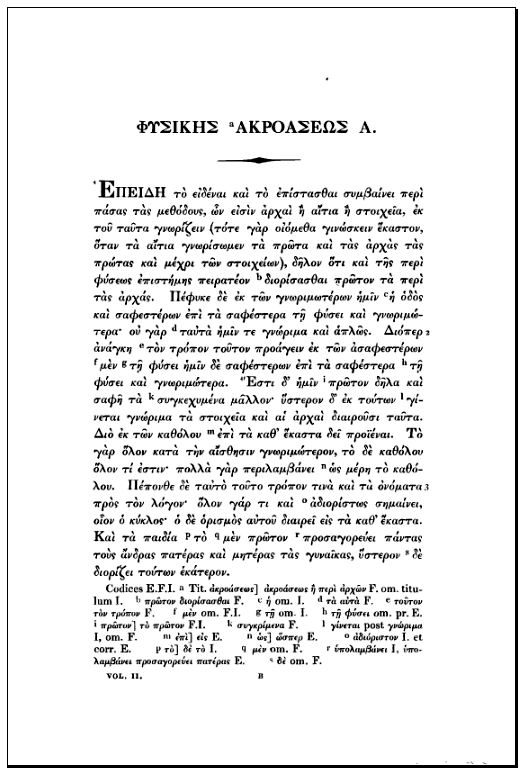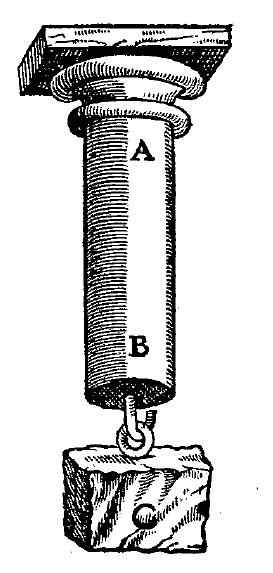|
De Motu Antiquiora
''De Motu Antiquiora'' ("The Older Writings on Motion"), or simply ''De Motu'', is Galileo Galilei's early written work on motion. It was written largely between 1589 and 1592, but was not published until 1687, after his death. It was never published during his lifetime due to a few uncertainties in his mathematics and certain parts of his understanding. Because it was never published during his life, he never composed a final draft. In the last parts of his work, the writing style changes from an essay to a dialogue between two people who strongly uphold his views. By writing this book in the 16th century, Galileo was on the forefront of investigating the motion of falling bodies. In ''De Motu'', he openly rejects Aristotle's views on the physics of motion and his astronomical views. Galileo opposes him with not only his opinion but with facts he has obtained based on experiment and on observation of celestial bodies.Machamer, Peter"Galileo Galilei" The Stanford Encyclopedia of P ... [...More Info...] [...Related Items...] OR: [Wikipedia] [Google] [Baidu] |
Galileo Galilei
Galileo di Vincenzo Bonaiuti de' Galilei (15 February 1564 – 8 January 1642) was an Italian astronomer, physicist and engineer, sometimes described as a polymath. Commonly referred to as Galileo, his name was pronounced (, ). He was born in the city of Pisa, then part of the Duchy of Florence. Galileo has been called the "father" of observational astronomy, modern physics, the scientific method, and modern science. Galileo studied speed and velocity, gravity and free fall, the principle of relativity, inertia, projectile motion and also worked in applied science and technology, describing the properties of pendulums and "hydrostatic balances". He invented the thermoscope and various military compasses, and used the telescope for scientific observations of celestial objects. His contributions to observational astronomy include telescopic confirmation of the phases of Venus, observation of the four largest satellites of Jupiter, observation of Saturn's rings, and a ... [...More Info...] [...Related Items...] OR: [Wikipedia] [Google] [Baidu] |
Falling Bodies
Lection 0 A set of equations describing the trajectories of objects subject to a constant gravitational force under normal Earth-bound conditions. Assuming constant acceleration ''g'' due to Earth’s gravity, Newton's law of universal gravitation simplifies to ''F'' = ''mg'', where ''F'' is the force exerted on a mass ''m'' by the Earth’s gravitational field of strength ''g''. Assuming constant ''g'' is reasonable for objects falling to Earth over the relatively short vertical distances of our everyday experience, but is not valid for greater distances involved in calculating more distant effects, such as spacecraft trajectories. History Galileo was the first to demonstrate and then formulate these equations. He used a ramp to study rolling balls, the ramp slowing the acceleration enough to measure the time taken for the ball to roll a known distance. He measured elapsed time with a water clock, using an "extremely accurate balance" to measure the amount of water.See the w ... [...More Info...] [...Related Items...] OR: [Wikipedia] [Google] [Baidu] |
Aristotle
Aristotle (; grc-gre, Ἀριστοτέλης ''Aristotélēs'', ; 384–322 BC) was a Greek philosopher and polymath during the Classical period in Ancient Greece. Taught by Plato, he was the founder of the Peripatetic school of philosophy within the Lyceum and the wider Aristotelian tradition. His writings cover many subjects including physics, biology, zoology, metaphysics, logic, ethics, aesthetics, poetry, theatre, music, rhetoric, psychology, linguistics, economics, politics, meteorology, geology, and government. Aristotle provided a complex synthesis of the various philosophies existing prior to him. It was above all from his teachings that the West inherited its intellectual lexicon, as well as problems and methods of inquiry. As a result, his philosophy has exerted a unique influence on almost every form of knowledge in the West and it continues to be a subject of contemporary philosophical discussion. Little is known about his life. Aristotle was born in th ... [...More Info...] [...Related Items...] OR: [Wikipedia] [Google] [Baidu] |
Aristotelian Physics
Aristotelian physics is the form of natural science described in the works of the Greek philosopher Aristotle (384–322 BC). In his work ''Physics'', Aristotle intended to establish general principles of change that govern all natural bodies, both living and inanimate, celestial and terrestrialincluding all motion (change with respect to place), quantitative change (change with respect to size or number), qualitative change, and substantial change (" coming to be" oming into existence, 'generation'">existence.html" ;"title="oming into existence">oming into existence, 'generation'or "passing away" [no longer existing, 'corruption']). To Aristotle, 'physics' was a broad field that included subjects that would now be called the philosophy of mind, sensory experience, memory, anatomy and biology. It constitutes the foundation of the thought underlying many of his works. Key concepts of Aristotelian physics include the structuring of the cosmos into concentric spheres, with the Ear ... [...More Info...] [...Related Items...] OR: [Wikipedia] [Google] [Baidu] |
Two New Sciences
The ''Discourses and Mathematical Demonstrations Relating to Two New Sciences'' ( it, Discorsi e dimostrazioni matematiche intorno a due nuove scienze ) published in 1638 was Galileo Galilei's final book and a scientific testament covering much of his work in physics over the preceding thirty years. It was written partly in Italian and partly in Latin. After his ''Dialogue Concerning the Two Chief World Systems'', the Roman Inquisition had banned the publication of any of Galileo's works, including any he might write in the future. After the failure of his initial attempts to publish ''Two New Sciences'' in France, Germany, and Poland, it was published by Lodewijk Elzevir who was working in Leiden, South Holland, where the writ of the Inquisition was of less consequence (see House of Elzevir). Fra Fulgenzio Micanzio, the official theologian of the Republic of Venice, had initially offered to help Galileo publish in Venice the new work, but he pointed out that publishing the ''T ... [...More Info...] [...Related Items...] OR: [Wikipedia] [Google] [Baidu] |
1687 Books
Events January–March * January 3 – With the end of latest of the Savoyard–Waldensian wars in the Duchy of Savoy between the Savoyard government and Protestant Italians known as the Waldensians, Victor Amadeus III, Duke of Savoy, carries out the release of 3,847 surviving prisoners and their families, who had forcibly been converted to Catholicism, and permits the group to emigrate to Switzerland. * January 8 – Richard Talbot, 1st Earl of Tyrconnell, is appointed as the last Lord Deputy of Ireland by the English crown, and begins efforts to include more Roman Catholic Irishmen in the administration. Upon the removal of King James II in England and Scotland, the Earl of Tyrconnell loses his job and is replaced by James, who reigns briefly as King of Ireland until William III establishes his rule over the isle. * January 27 – In one of the most sensational cases in England in the 17th century, midwife Mary Hobry murders her abusive husband, De ... [...More Info...] [...Related Items...] OR: [Wikipedia] [Google] [Baidu] |
Books By Galileo Galilei
A book is a medium for recording information in the form of writing or images, typically composed of many pages (made of papyrus, parchment, vellum, or paper) bound together and protected by a cover. The technical term for this physical arrangement is ''codex'' (plural, ''codices''). In the history of hand-held physical supports for extended written compositions or records, the codex replaces its predecessor, the scroll. A single sheet in a codex is a leaf and each side of a leaf is a page. As an intellectual object, a book is prototypically a composition of such great length that it takes a considerable investment of time to compose and still considered as an investment of time to read. In a restricted sense, a book is a self-sufficient section or part of a longer composition, a usage reflecting that, in antiquity, long works had to be written on several scrolls and each scroll had to be identified by the book it contained. Each part of Aristotle's ''Physics'' is called a bo ... [...More Info...] [...Related Items...] OR: [Wikipedia] [Google] [Baidu] |
Historical Physics Publications
History (derived ) is the systematic study and the documentation of the human activity. The time period of event before the invention of writing systems is considered prehistory. "History" is an umbrella term comprising past events as well as the memory, discovery, collection, organization, presentation, and interpretation of these events. Historians seek knowledge of the past using historical sources such as written documents, oral accounts, art and material artifacts, and ecological markers. History is not complete and still has debatable mysteries. History is also an academic discipline which uses narrative to describe, examine, question, and analyze past events, and investigate their patterns of cause and effect. Historians often debate which narrative best explains an event, as well as the significance of different causes and effects. Historians also debate the nature of history as an end in itself, as well as its usefulness to give perspective on the problems of the p ... [...More Info...] [...Related Items...] OR: [Wikipedia] [Google] [Baidu] |






.jpg)